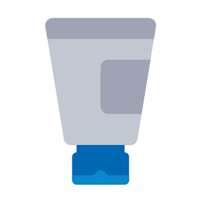

STEP 1 – Cleanse the skin
Cleanse the skin thoroughly to remove all irritants, including bodily fluids. When exposed to urine and/or faeces, the skin’s pH changes, and this causes an increase in permeability and a reduction in the natural barrier function. Cleansing the skin also ensures the natural function of the skin is maintained (Wounds UK Best Practice statement, 2012).
Following cleansing, ensure the skin is completely dry.


STEP 2 – Keep excess moisture away from the skin
Where there is the risk of exposure of the patient’s skin to excessive moisture and fluids, place an appropriately sized Ultrasorbs Drypad under their body. This will absorb and wick away the moisture, helping to keep the skin dry.


STEP 3 – Protect and moisturise the skin
Apply a moisturising barrier cream and/or film to moisturise and protect vulnerable skin, creating a physical barrier and minimising exposure to irritants and excessive moisture, such as bodily fluids.
Good nutrition and hydration
Ensuring patients maintain a healthy weight and good fluid intake helps protect the integrity of their skin. They should have a balanced diet and an intake of 6 – 8 glasses of water per day. Poor nutrition and hydration below the recommended level greatly influence all wound healing by hindering tissue and skin repair.
Additional education resources
References
1. Collier Mark (2016). Protecting Vulnerable skin from moisture associated skin damage, British Journal of Nursing, 25, No 20: Tissue Viability Supplement1. Collier Mark (2016). Protecting Vulnerable skin from moisture associated skin damage, British Journal of Nursing, 25, No 20: Tissue Viability Supplement
2. NHS Hospital Episode Statistics (HES) data, 2017-18
Related Products
